Southern flannel moth sounds pretty harmless, right? Well, this is a caterpillar with venom that stings and burns so badly that people have described it as feeling like a knife wound! Its common name is venomous puss caterpillar. That sounds more accurate. Let’s learn more about our furry frienemy.
Southern Flannel Moth

It’s hard to believe that this cute creature is a
caterpillar
with venom that really hurts.
©iStock.com/irin717
The Southern flannel moth, or Megalopyge opercularis, is a species of moth that lives in the southeastern United States. People have given it many different names over the years. You will hear it called fire caterpillar, opossum bug, puss moth, asp caterpillar, Italian asp, and asp caterpillar, to name a few.
It is a small moth, with adults typically measuring about 1/2 inch long. The caterpillars are covered in soft fur and have venomous spines that can cause severe stings to humans who come into contact with them. Each spine of the caterpillar has a hollow center with a venom gland at the bottom. All of the larvae are venomous, but the stinging is worse the larger the size of the caterpillar.
The caterpillar is usually light grey or brownish-grey but can sometimes be white or yellowish-green as well. Its body is covered with tufts of reddish-brown hair, and its head is yellow. The venomous spines are mostly located on the caterpillar’s back but can also grow on its sides and front legs.
What Does it Feel Like?
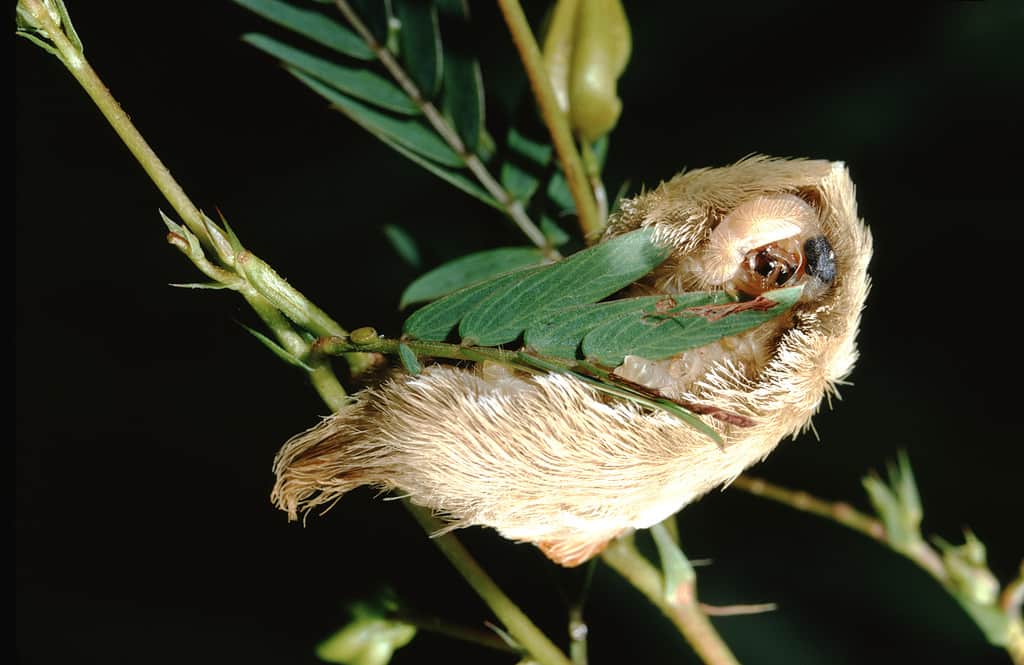
Southern Flannel Moth or Puss Caterpillar (Megalopyge Opercularis) has a painful sting.
©Weber/iStock via Getty Images
This moth looks a lot like a miniature Persian cat or a teeny tiny shag rug. But don’t let its cute, fuzzy appearance trick you. These furry spines contain a toxic venom that causes severe pain when it comes into contact with human skin. The severity of the sting depends on how thick the skin is in the area that you are stung. Some people who were stung on the bottom of their feet hardly felt anything. The more sensitive the area, the worse the pain.
It has been described as feeling like a knife wound or hot coals being pressed against the skin. In some cases, people have reported experiencing headaches, nausea, vomiting, and swollen lymph nodes at the site of the sting.
If you come into contact with one of these caterpillars, it is important to seek medical attention as soon as possible. Because the caterpillar’s venom is very similar to bee stings, some folks who react to bees may also react to a caterpillar with venom. This is particularly concerning to those with anaphylactic reactions.
Why Does Their Sting Hurt So Bad?
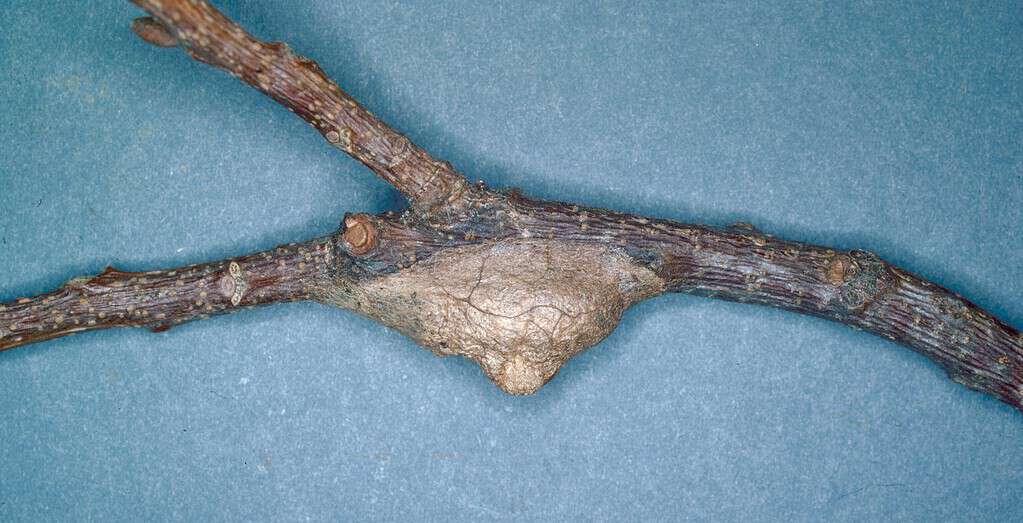
If you didn’t know better, you would never guess this was the cocoon of a caterpillar with venom. What a great disguise!
©Lacy L. Hyche, Auburn University, United States, CC BY-SA 3.0 – License
The venom of the Southern flannel moth has a protein in it that is circular in shape. This ring-shaped protein pierces our human cells. This sends a pain signal through our nerves to our brain.
Interestingly, scientists are hoping to develop human medicines using this cell-piercing technology. They are hoping that by studying this caterpillar with venom, they can create medicines that will go deep inside human cells and effectively treat diseases. Researchers who are studying cancer and pathogens are hoping to engineer a type of toxin similar to a caterpillar with venom to treat tumors. The venom of the Southern flannel moth also contains compounds that cause inflammation. To scientists who are studying inflammatory diseases, like rheumatoid arthritis and inflammatory bowel disease, this is useful information that they hope to reverse engineer. After all, this caterpillar has survived 400 million years. It must be doing something right!
A Caterpillar with Venom—How to Treat the Sting
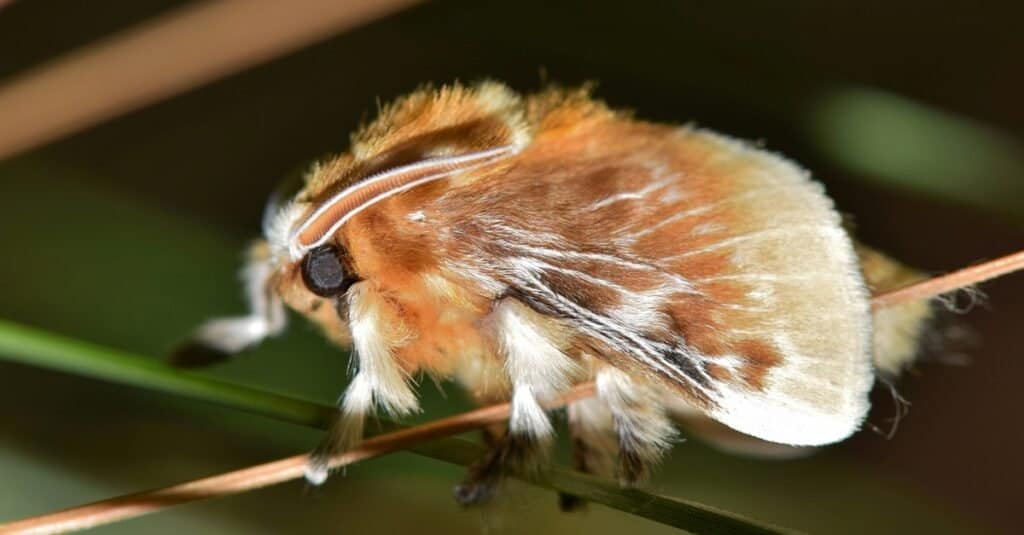
If you are interested in learning about a caterpillar with venom, look no further than the Southern flannel moth.
©Brett Hondow/Shutterstock.com
This caterpillar with venom is dangerous because of its venomous spines. When people are exposed to the caterpillar’s hairy spines, it can cause immediate skin irritation. Many people who have been stung describe it as a white-hot sensation. Others say it is as sharp as a broken bone or being whipped with a belt.
The reaction usually stays local to the affected area, but it is severe. The pain radiates along the nerves and travels through the limbs. Most people have a combination of blistering, rashes, and numbness. There is also difficulty breathing, sweating, nausea and headaches.
Treatment should begin within hours of the first touch. To help reduce the venom’s effects, remove the spines. You can remove them using tweezers or strong cellophane tape. Use tape multiple times to ensure you get all of the spines out. Use a new piece of tape every time so you don’t re-sting yourself. If you go to a clinic, doctors will treat you with steroid creams and ice packs to numb the area.
People who live near these creatures have developed home treatments using baking soda, crushed comfrey plants, and calamine lotion, but there is limited evidence that they work.
Where Do Caterpillars With Venom Live?

This caterpillar with venom has many common names, including the southern flannel moth and the cat caterpillar.
©Nur Diana/iStock via Getty Images
Southern flannel moths live in the Southeastern United States and Mexico, usually in wooded areas like deciduous forests. However, they also exist in urban and suburban areas. Which is not great news for the people who live there.
The adult moths are usually present during the late summer and fall, while their larvae, puss caterpillars, are active from spring to early fall. These caterpillars feed on a variety of plants, including elms, pecan trees, and oaks. They are an agricultural pest as well, eating corn, peanuts, and cotton crops.
Lifecycle of the Southern Flannel Moth
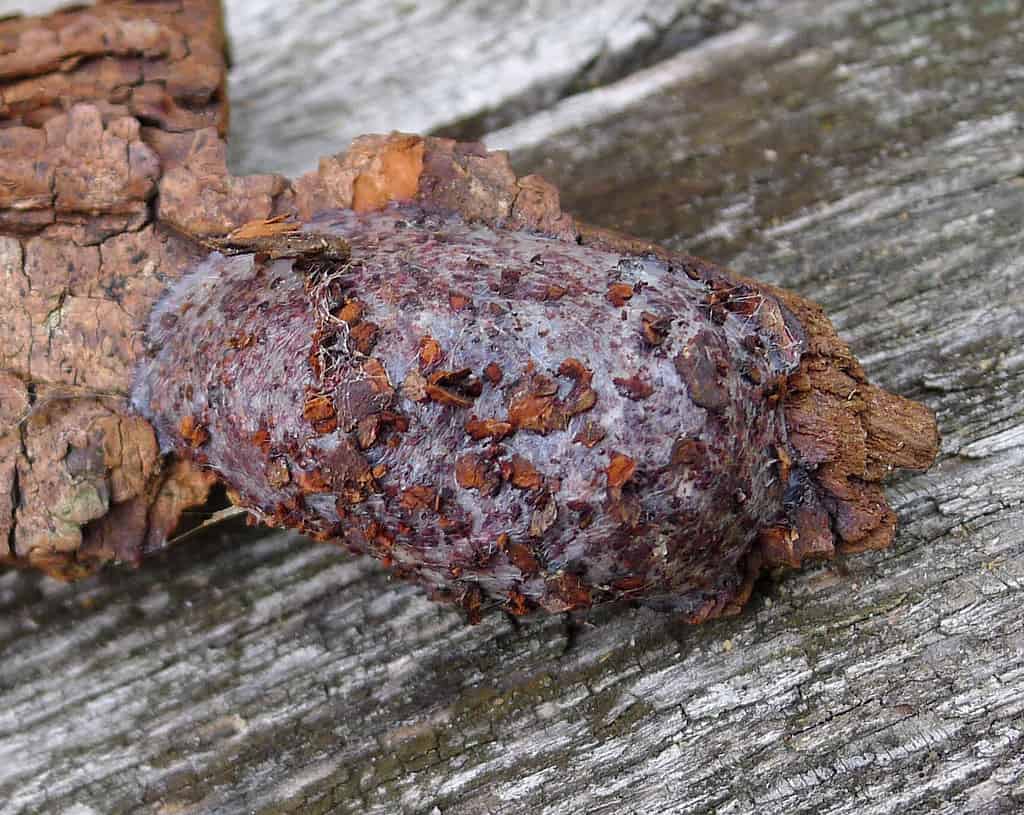
The puss caterpillar disguises its cocoon by weaving silk, hair, and bark together for camouflage.
©gailhampshire from Cradley, Malvern, U.K, CC BY 2.0 – License
The Southern flannel moth progresses through four stages throughout its lifecycle. It starts as an egg and then moves to larva, pupa, and adult.
Egg
The eggs are only 1.2 millimeters long and half of one millimeter wide. They are rounded at the end and slightly yellow. The eggs of this hairy caterpillar are also hairy! They are covered in a fine yellow down. The female moth lays her small, round eggs in clusters underneath the leaves of host plants. Popular host plants are oak, holly, and pyracantha. The eggs take 6-8 days to hatch.
Larvae
Upon hatching, the larvae (caterpillars) start to feed on the leaves of the host plant. These caterpillars have a fuzzy texture and yellow-orange tufts of hair as well as a venomous sting that can be painful.
Pupae
After the caterpillars have grown large enough, they spin a cocoon and become pupae. The pupae are reddish-brown and usually attach to a leaf or twig.
Cocoon
The cocoon is around two centimeters long and has a pump on top that scientists have called the hair pocket. The cocoon is very tough and will stay attached to the host plant for years after the moth has left home. The caterpillars construct their cocoon by spinning silk and mixing it with their own hair. They attach the cocoon to either small twigs or inside the fissures in the tree bark. They stuff the cocoon with more hair from their body to make it cozy and warm.
Adult
In about two weeks, the pupae then turn into an adult moth with a wingspan of 1-1.5 inches. This entire process from egg to adult takes between 5-6 weeks. Most Southern flannel mothers have two broods per year and, once in a while, three. They mate the same day that they emerge and lay their eggs within 48 hours.
Why Do Puss Caterpillars Have Venom?
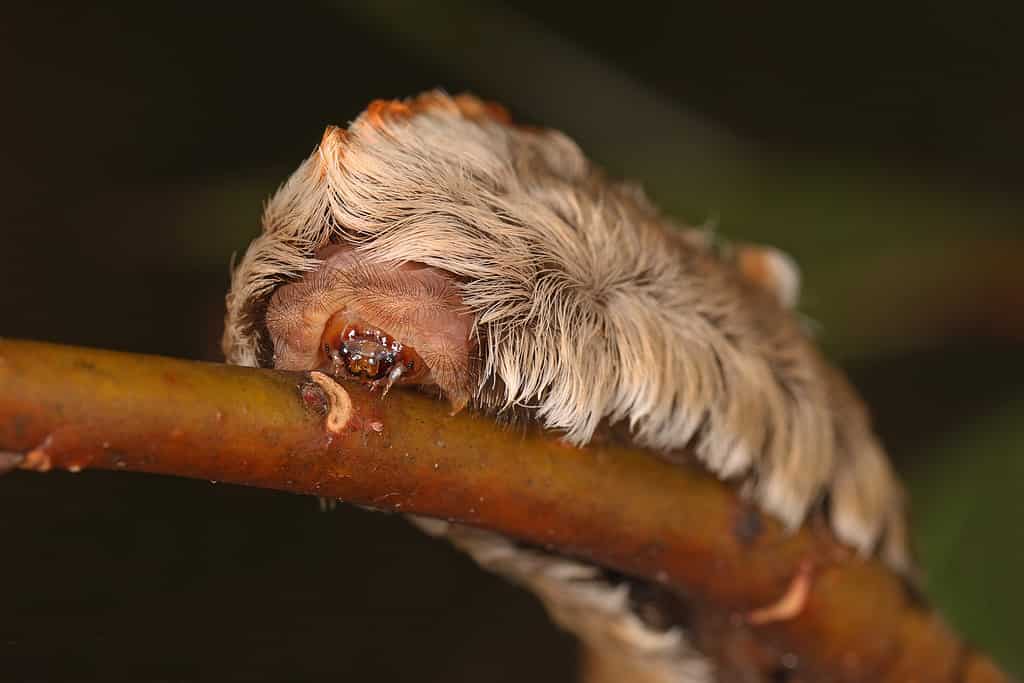
Who would want to eat a caterpillar with venom? Apparently green lacewings think they are tasty.
©Judy Gallagher, CC BY 2.0 – License
Southern flannel moths are caterpillars with venom. Their hairs are hollow and contain a toxic cocktail of chemicals that can cause intense pain when they come into contact with skin. Scientists believe that the reason for this toxin is to ward off predators, as the caterpillars are relatively defenseless against larger animals. It’s also thought that the toxins may help prevent fungi and bacteria from getting on their bodies while they are in their cocoon stage.
Does a Caterpillar With Venom Have Predators?

Anoles lizards sometimes eat caterpillars with venom. They must be really hungry.
©Radiant Reptilia/Shutterstock.com
The main predators of Southern flannel moths are green lacewing insects that eat the eggs and small larvae. The Anolis lizard, or anole lizard, is another predator. It each the larger larva. After it eats them, it rubs its face on the ground. Scientists wonder if they are feeling the burn, too!
Tachinid flies are harmful to Southern flannel moths by laying eggs on the outside of the caterpillars themselves. They are natural parasites and sneak into the cocoon by hitchhiking on the caterpillar’s body. Some species of tachinid flies eat young larvae.
The photo featured at the top of this post is © Judy Gallagher, CC BY 2.0 – License / Original
Thank you for reading! Have some feedback for us? Contact the AZ Animals editorial team.






